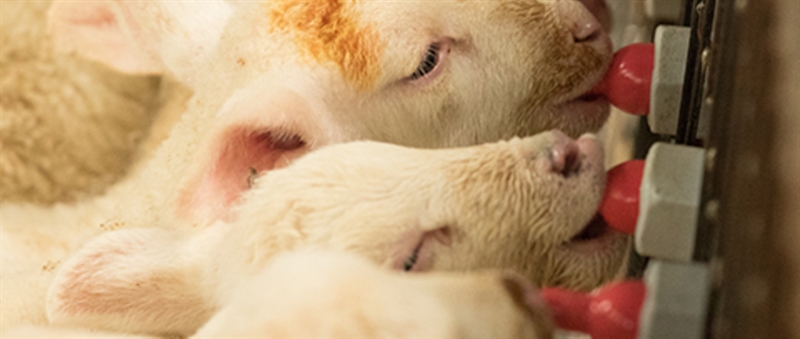
Rearing surplus lambs effectively
Maximising the number of lambs sold per ewe put to the ram is one of the key benchmarks for a successful sheep farming enterprise. For many of the top performing flocks this will mean rearing some surplus lambs artificially. But rearing these newborns quickly and efficiently to potentially target an earlier premium market also makes sound economic sense. Whatever artificial rearing system you adopt, feeding a good quality milk replacer such as Lamlac alongside good husbandry practices will help you to capitalise on this early life growth potential and produce great extra lambs as quickly as possible.
Follow these four crucial steps for best results:
1. Don't compromise with colostrum feeding
As with all newborn lambs, the first priority is to ensure every surplus lamb receives sufficient colostrum (50ml/kg liveweight per feed and a minimum of 210ml/kg liveweight within the first 24 hours). This feed provides essential nutrition, as well as the important antibodies to help newborns fight off infections.
2. Choose the optimum artificial feeding system
Surplus lambs can be reared on milk replacer via bottle, through ad lib bucket feeding or with automatic machine feeding. The method you choose will typically depend on the number of surplus lambs you have and the facilities that you have available.
If you are using a bucket or machine you will need to train lambs to suckle the teat. Be patient. If removing a surplus (e.g. third lamb) lamb from the ewe, take it away at 24 hours old, then leave it for a few hours to become hungry before gently introducing it to the teat. Teats should be positioned 12-15 inches from the ground.
3. Feed the right ewe milk replacer
Lamlac ewe milk replacer is designed to be a complete diet providing the lamb with all the energy and nutrients it needs. Mix 200g of Lamlac with water to make up one litre of mixed milk (20% concentration). i.e 200g Lamlac + 800ml water = 1litre of milk.
If feeding warm: mix and feed at 39°C. Do not use hot water (above 45°C) as this may damage the sensitive proteins that are so essential for optimum lamb growth. If feeding cold: mix and feed cold. Do not mix warm and allow to cool.
4. Get your lamb husbandry right
Lambs reared artificially will also need constant access to fresh, clean water at all times. Top quality creep feed should also be readily available to lambs and be offered fresh at least once a day, with refusals being fed to older stock (e.g. ewes). Introduce clean, dry straw - preferably barley into racks. Don't feed ad-lib high quality roughage for example, hay, during milk feeding as this can depress concentrate intake and delay weaning.
For optimum rearing results, don't keep more than 25 lambs in a pen and keep similar ages and sizes together. Lambs must also have access to a clean, dry straw-bedded lying area which is well ventilated but draught-free. Check your lambs at least twice a day.
Finally, maintain scrupulous hygiene protocols. For example, all feeding equipment should be thoroughly cleaned each day and disinfected twice weekly.
Follow these steps with your surplus lambs and you will optimise early life lamb growth potential and ensure these valuable extra offspring will be ready for weaning as quickly as possible.